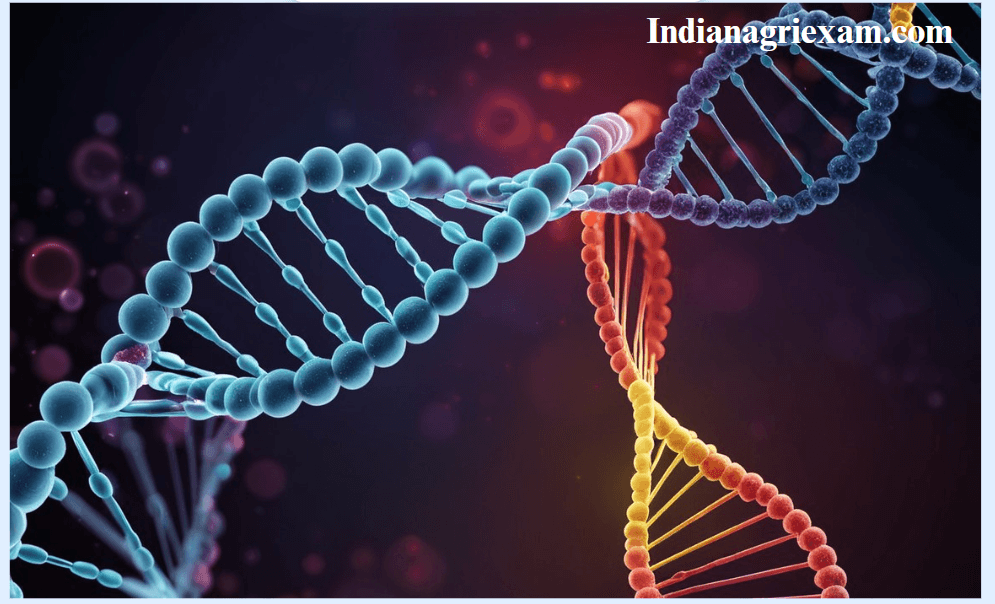
- Nucleic Acids
Structure:
- Nucleic acids are large macromolecules composed of nucleotides.
- A nucleotide consists of:
- A phosphate group
- A pentose sugar (deoxyribose in DNA and ribose in RNA)
- A nitrogenous base (Adenine [A], Thymine [T] for DNA, Uracil [U] for RNA, Cytosine [C], and Guanine [G])
- A nucleotide consists of:
- There are two main types of nucleic acids:
- DNA (Deoxyribonucleic acid): Double-stranded helix structure, with a sugar-phosphate backbone and nitrogenous base pairs (A-T, C-G) held together by hydrogen bonds.
- RNA (Ribonucleic acid): Single-stranded, with a ribose sugar and uracil replacing thymine (A-U, C-G).
Functions:
- DNA:
- Genetic Information Storage: DNA stores genetic information used for the growth, development, functioning, and reproduction of organisms.
- Replication: DNA replication ensures that genetic material is passed on during cell division.
- Protein Synthesis: DNA contains the instructions for building proteins through transcription and translation.
- RNA:
- Messenger RNA (mRNA): Carries genetic information from DNA to the ribosome for protein synthesis.
- Transfer RNA (tRNA): Brings amino acids to the ribosome during protein synthesis.
- Ribosomal RNA (rRNA): Forms the structural and catalytic core of the ribosome, facilitating protein synthesis.
- Enzymes
Structure:
- Enzymes are biological catalysts that speed up chemical reactions without being consumed in the process.
- Primary Structure: Sequence of amino acids forming a polypeptide chain.
- Secondary Structure: The folding of the polypeptide chain into alpha-helices and beta-pleated sheets.
- Tertiary Structure: The three-dimensional shape of the enzyme, essential for its function, with the active site where the substrate binds.
- Quaternary Structure: Some enzymes are made up of multiple polypeptide chains (subunits).
Functions:
- Catalysis of Biochemical Reactions: Enzymes lower the activation energy required for a reaction to occur, speeding up metabolic processes.
- Specificity: Enzymes are highly specific for their substrates, meaning they only catalyze particular reactions.
- Regulation: Enzyme activity can be regulated by various factors such as temperature, pH, and the presence of inhibitors or activators.
- Types of Enzymes:
- Hydrolases: Catalyze hydrolysis reactions (e.g., digestive enzymes like amylase).
- Oxidoreductases: Catalyze oxidation-reduction reactions (e.g., dehydrogenases).
- Transferases: Transfer functional groups between molecules (e.g., kinases).
- Ligases: Join two molecules (e.g., DNA ligase).
Examples:
- Amylase: Breaks down starch into sugars.
- Lipase: Breaks down lipids (fats) into fatty acids and glycerol.
- DNA Polymerase: Involved in DNA replication, catalyzing the addition of nucleotides to form DNA strands.
- Vitamins
Structure:
- Vitamins are organic compounds required in small amounts for normal metabolism and are classified into two groups based on their solubility:
- Water-Soluble Vitamins: Vitamin C (ascorbic acid) and the B-complex vitamins (B1, B2, B3, B6, B12, folic acid, biotin, pantothenic acid).
- Fat-Soluble Vitamins: Vitamin A, D, E, and K.
Functions:
- Vitamin A:
- Function: Essential for vision, immune system function, skin health, and growth.
- Deficiency: Can lead to night blindness and dry skin.
- Vitamin B Complex:
- Function: Each B vitamin has a specific role, including energy metabolism (B1, B2, B3), red blood cell production (B12, folate), and nervous system function (B6).
- Deficiency: Can cause conditions like beriberi (B1 deficiency), pellagra (B3 deficiency), or anemia (B12 or folate deficiency).
- Vitamin C (Ascorbic Acid):
- Function: An antioxidant that helps in collagen formation, wound healing, and iron absorption.
- Deficiency: Can lead to scurvy, with symptoms such as gum bleeding and weakness.
- Vitamin D:
- Function: Promotes calcium absorption in the intestines, essential for bone health.
- Deficiency: Leads to rickets (in children) or osteomalacia (in adults).
- Vitamin E:
- Function: Acts as an antioxidant, protecting cells from damage by free radicals.
- Deficiency: Rare but can cause nerve and muscle damage.
- Vitamin K:
- Function: Essential for blood clotting and bone health.
- Deficiency: Can cause excessive bleeding or bruising.

